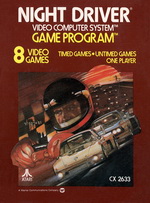Articles
I have eight articles currently, the History of Music, the History of Midi, the History of my Musical Creations, the History of my BBC Micro Music, a Brief History of the Single, Technology and Media in 1996, Autographs and Tomorrow's World - The Jam Spreading Myth.
A Brief History of the Single - Part 2
Computer Programs
The final variation with the single, other than free gifts like posters or t-shirts was the inclusion of a computer program. As programs were loaded from cassette, you could include a track on the single that could be recorded onto a tape and loaded into a computer. The problem was that there were several popular computers around at the time, like the ZX81, ZX Spectrum, Vic 20, Commodore 64 or BBC Microcomputer. There would only be room for one computer program so if you didn't have that particular computer you couldn't use the program.
Kissing The Pink (who had given away a t-shirt with the 12 inch version of The Last Film) included a BBC Microcomputer program on the 12 inch of The Other Side of Heaven that you played along with the music. It featured a digitised version of the cover that was split into squares and animated. Chris Sievey (who would later become the character Frank Sidebottom) release a single called Camouflage, which had three computer programs on the B-side, one which showed the lyrics in time with the song. The Thompson Twins had an adventure game given away free on a Flexidisc with the magazine Computer and Video Games. If you won the game you could win concert tickets and a backstage pass. When Pete Shelley released his album XL-1, the last track was a computer program for the ZX81 or Spectrum, with graphics and lyrics for every track.


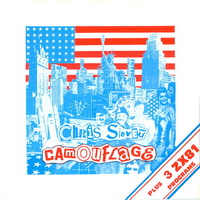
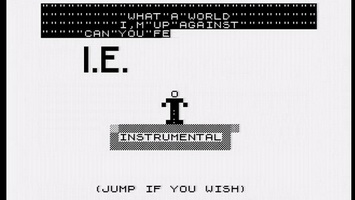


Covers and screengrabs for Kssing The Pink, Chris Sievey and The Thompson Twins
Picture Discs
In the 1970s the picture disc started to appear. Thicker that the standard 7 inch single, this had a picture on both sides of the record, and was actually a sandwich of paper with the pictures on top of a black vinyl, covered with clear vinyl so the detail showed. Some record labels combined this with a cut-out shape. China Crisis released two record picture discs in the shape of hands for their single Black Man Ray.



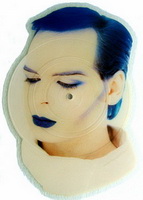


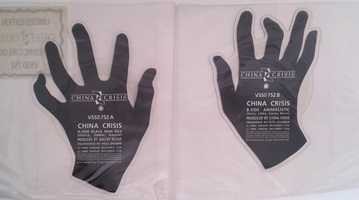

Picture Discs from Tracey Ulman, Culture Club, Doot, Gary Numan, The Beatles, Simply Red, China Crisis and the Thompson Twins
Coloured vinyl was another way to promote special editions of singles and would appear on long players as well as 7 and 12 inch singles. The sound quality may vary but collectors will pay more for a coloured vinyl version. Some which I have include a 10 inch white vinyl copy of Basia's Promises (which also has a double groove), a red 7 inch vinyl version of The Fixx's Red Skies, a green 12 inch single of Kenny Everett's Snot Rap and a brown vinyl 12 inch of Mankind's disco version of the Doctor Who theme. This last 12 inch was also released in blue and yellow vinyl.

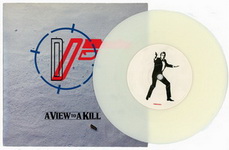
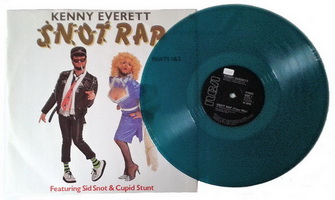
Coloured vinyl from The Art of Noise, Duran Duran and Kenny Everett
Censorship
Censorship of single releases has been going long before Frankie Goes to Hollywood's Relax. The Kinks single Lola was in trouble not because of the subject matter, but because it featured the words 'coca-cola', which was against the BBC product placement ban. So that the single could be played on the radio and feature on BBC television programmes, Ray Davies rerecorded the lyrics with 'cherry-cola' instead. During the Gulf War, several songs were deemed inappropriate and the BBC refused to play a long list of singles, including Boom-Bang-a-Bang by Lulu, Bang Bang by BA Robertson, Bang Bang (My Baby Shot Me Down) by Cher, I'll Fly For You by Spandau Ballet, Everybody Wants To Rule the World by Tears For Fears and Atomic by Blondie. (We Don't Need This) Fascist Groove Thang by Heaven 17 was banned because it libelled Ronald Reagan, Lil Louis' French Kiss had too much heavy breathing, but it still got to number 2 in the charts and Living On The Ceiling by Blancmange had to have the lyrics changed from 'bloody tree' to 'cuckoo tree' to have a radio friendly version.
Re-Releases
Singles were sometimes not successful when first released. Jackie Wilson's Reet Petite got to number 6 in 1957, but was re-released in 1986 and got to number one for 4 weeks. This meant it was 29 years from the song's debut on the chart and it reaching number one. In 2005 Tony Christie's (Is This the Way to) Amarillo beat this record, released originally in 1971. The video for the single of Reet Petite had a claymation animation, as did the cover (a still from the video) and another old song, Robert Parker's Barefootin', had a similar style cover and video. This was originally release in 1966, but re-released in 1987.


Jackie Wilson's Reet Petite and Robert Parker's Bare Footin' re-issues
A-ha's Take on Me was released three times from 1984-1985 before it got to number 2 in the UK charts, helped by the video which used rotoscoping (a pencil sketch animation with live action) to great effect, but took 16 weeks to produce because of this.



The three releases of a-ha's Take on Me
The Pet Shop Boys first single, West End Girls was released in April 1984 and was produced by Bobby Orlando who played most of the parts and used James Brown samples and the drums from Michael Jackson's Billie Jean. It only got to number 121 in the UK, and the following year their third single, Opportunities, only got to 116. They decided to re-record West End Girls, using an Emu Emulator sampler for all the instruments and released it in October 1985.Within 8 weeks it had got to number one.


Two releases of Pet Shop Boys' West End Girls on 12"
Music Video
A boost to promotion of singles was the launch in the US of Music Television. Launched in 1981 with Video Killed the Radio Star by The Buggles as the first video, the station broadcast music videos 24 hours a day. The Beatles had used music films to promote their singles in the 60s, and the producer of the Moody Blues made a film clip for their song Go Now in 1964. In fact, the promo film was a popular concept before Queen made their video for Bohemian Rhapsody in 1975. David Bowie's video for Ashes to Ashes was the most expensive at the time, costing around £250,000. The New Zealand group Split Enz made a video for every track of their album True Colours, which featured their hit single I Got You.




Video Killed The Radio Star, I Got You, Ashes To Ashes and Thriller
In 1983 the most successful music video was made by John Landis for Michael Jackson's song Thriller. It was over 13 minutes long and the musical arrangement was different to the single/album version. In the UK it premiered on a special late night version of the Tube on Channel 4, introduced by Leslie Ash and Jools Holland. The end credits to the video were cut from the show which ended around 1:20am. I recorded the program and my class mates and I watched it during our Economics lesson the next day! I saw a rare 12 inch picture disc of the song with the video version of the track in a record store a few months later for £25, at the time when standard 12 inch single cost around £4.
Compilation Albums
In November 1983 Virgin and EMI release the first of their Now That's What I Call Music albums. These were double albums with hit singles of the time. This wasn't a new idea, as K-Tel and Ronco had been doing this since the 70s, but with some limitations. In order to fit so many singles on the album, the grooves were cut finer and the songs were usually edited (some quite drastically) so you could fit half an hour's worth of music on each side. A series of albums called Top of the Pops were also released but were nothing to do with the television show. These albums also didn't feature the original songs, but cover versions by studio artists. The Now series still had to occasionally edit the tracks, but were issued on vinyl, cassette and video. Since Now 10 in 1987 they were also available on compact disc and the vinyl version stopped in 1996 with Now 35. The cassette version finished in 2006 with Now 63. The brand has been exported to many other countries and had special editions of certain type of music or decades of music.



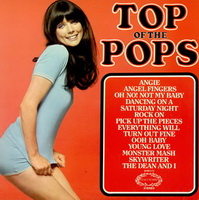
Compilation albums - Now That's What I Call Music, 20 Fantastic Hits, Disco Fever and Top of the Pops
The CD Single
In 1985 the CD single format began with the Dire Straits track Brothers in Arms. Just like the 12 inch single remixes and multiple releases became the norm.




Holographic Cover and CD from Marc Almond and Simply Red
CD Packaging was varied, going from the single cardboard cover, the slim CD case, the standard CD album case to the gatefold cardboard/plastic case. Some were released as 3 inch CDs in either a smaller cardboard case or plastic one. A plastic adapter to increase the size to 5 inches would sometimes be included to allow the disc to play on machines that couldn't cope with the smaller disc size. Some CDs were made as limited editions with a holographic effect on the cover and on the CD.
CD Plus
A popular variation on the CD Single was the CD Plus a.k.a. Enhanced CD or CD Extra. This was a multi-mode CD that played audio in a CD player and had multimedia content if played on a computer. Many groups issued these types of discs, like Aqua, Geri Halliwell, Billie Piper, Steps and Natalie Imbruglia. Video standards on a PC were poor at the time, so even though it may feature the video of the single, the picture frame size could be small or the picture quality bad. There was no standard as the content was a PC program so any video format may be used.




CD plus singles from Aqua, Dario G, Holly Valance and Steps



CD Plus of Natalie Imbruglia's Smoke and John Travolta/Olivia Newton-John
Some companies included versions to play on a Mac, so QuickTime was used for the video format. This meant that the installation files for QuickTime had to be included. Most would autorun and also be able to play the audio tracks and some would include the lyrics (the John Travolta and Olivia-Newton-John single from Grease had a small video size but included a sing a long lyrics option). Some artists had a slick interface, like Natalie Imbruglia's CD for Smoke. Not only did it feature a video message from Natalie but extracts of videos of her previous songs. It was a shame that it didn't actually include the whole video for Smoke (it fades out after two minutes). Aqua eventually settled for a standard interface for their CDs but always had a small frame or poor quality video, from their first hit 'Barbie Girl' to 'Good Morning Sunshine'. The latter had a live video performance of the song as this was the official video. Steps used the mpeg format on their CD for Deeper Shade of Blue and didn't have an autorun program at all.
A few albums used this format, Iike Jean Michel-Jarre's remix album From Odyssey through O2. It included software that you could use to create a video to play with the music. This format became popular with computer games, as you could install the software from the disc and have a real audio track played during the game instead of relying on the computer's soundcard. The group Erasure included remix software on some of their singles so you could create your own version of the title track.
CD-Video
CD-Video (also known as CDV, CD-V or CD+V) was introduced in 1987 and combined the technologies of compact disc and LaserDisc. CD-V discs were the same size as a standard 5 inch audio CD, and contained up to 20 minutes worth of audio information that could be played on any audio CD player. It also contained up to 5 minutes of analog video information plus digital CD-quality sound, which could be played back on a newer laserdisc player capable of playing CD-V discs. They were gold in colour to distinguish them from standard audio CDs, but despite releases from artists like Bananarama, Level 42, Wham and Madonna they only lasted four years.
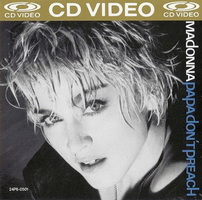


CD Video cover and disc from Madonna and Swing Out Sister
CD Length
Initially there was no limit to the number of tracks and total running time of CDs. A release by The Orb called Blue Clouds nearly ran for 40 minutes. At the other end of the scale a CD single of Peter Herman's I'm Into Something Good issued as a promotion for the film The Naked Gun, ran for 2 and a half minutes and only had the one track. In 1998 in the UK only CD Singles with less than twenty minutes of music would qualify for the charts. In the US the limit was three different songs, but unlimited remixes so CD singles could last 70 minutes and two CD collections from the UK version were often released on one disc in the US. Erasure's single Breathe had two CDs in the UK, the first had the title track and one other. The second had three remixes and a CD-ROM section with the video and software to let you remix the song. In the US, the maxi single had 8 tracks, including all the different versions from the UK release plus two extra mixes, an extra song and the CD-ROM content.
CD Packaging
Elaborate packaging and special editions almost became the norm with CD singles, with many extra versions or tracks. Thomas Dolby released three singles that were part of a limited edition collection. The second CD in each set had rare tracks or previous singles. Close But No Cigar's second disc had Hyperactive, She Blinded Me With Science and I Scare Myself, all previous singles. I Love You Goodbye's second disc contained Windpower and Europa and the Pirate Twins, and the third in the set, Silk Pyjamas had Airhead, Urges and Leipzig on the second disc.






CD packaging - Pet Shop Boys, Michael Jackson, Geri Haliwell, Depeche Mode, 3 inch CD with adapter from Erasure, OMD triple CD set



Thomas Dolby's three CD single limited edition collectors set
Depeche Mode released In Your Room as part of a three CD set with other versions of the single track as well as other tracks. Whilst most CD owners would be happy with one or two versions, DJs love the extra versions as it makes it easier to mix. Mash ups (the combination of two or more different songs) are easier to create if you have just the vocals from one song with the instruments of another. A combination of Kylie Minogue's Can't Get You Out Of My Head and New Order's Blue Monday was very popular. By taking the different elements of a song DJs could completely remake it but with a new twist. The group The Shamen went as far as including the individual parts of their hit Move Any Mountain on the album Progeny. They were divided on the last 16 tracks of the album, with a note on the back of the album "we're sick of remixing this - so here are the bits, go do it yourself!".
Music Downloads
By 2004 songs were available as downloads and the first official UK chart had Westlife's Flying Without Wings as the first number one. It was nearly two years later that Gnarls Barley's Crazy was the first number one based on downloads only, at 31,000 downloads from all the different internet sites. The concept of buying a single to get the extra mixes had disappeared as you could download individual tracks and you no longer had the physical copy, so packaging and cover art had also gone. Images can be embedded in music files but it's not the same as looking at the cover.
Since 2008 the sale of vinyl albums has increased whilst the sale of singles has gone down. Albums are being reissued and released on vinyl but at an increased cost. These new releases are on 180gms vinyl whereas the original weight of albums was 120gms. In the 70s it has been estimated that 228 million vinyl singles were sold, but by the late 80s, that had halved. By the 90s it was down to 22 million and by the end of the decade it was down to less than 8 million. By 2014 it was estimated to be 4 million units, but that was an increase of 40% from the previous year. This was relating to US sales and the UK the estimated sales of vinyl singles came to 1.2 million in 2015, but still a 50% increase from the previous year.
So vinyl is starting to make a bit of a comeback, even though some people buy them just to have the art work and something physical, without actually playing the record. The music video is a requirement for promotion and with the increased number of music video channels available. The endless remixes still continues and cover versions are a plenty, although some maybe for charity causes.
